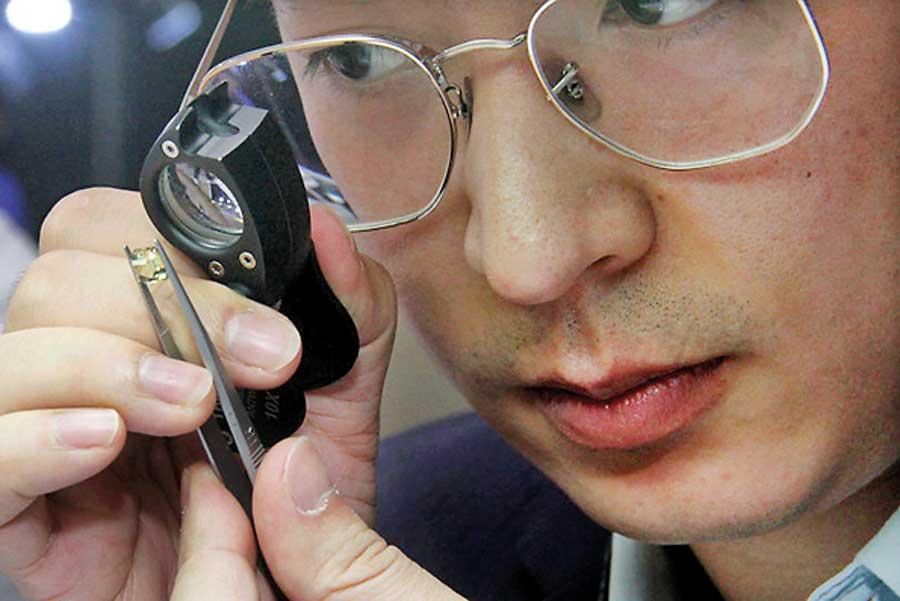Reply To:
Name - Reply Comment

The Sustainable Pavilion of the exhibition featuring the primitive practice of burning gemstones in Sri Lanka
Pix by pradeep dilrukshana
The changes brought to the Value Added Tax (VAT) did not even spare the FACETS gem and jewellery exhibition that kicked off over the weekend, as buyers who rely mainly on foreign gemstones pulled-out at the last moment, the Sri Lanka Gem & Jewellery Association (SLGJA) said.
According to Ajward Deen, the Association Chairman, buyers cited that they cannot remain competitive by selling their products with the additional 18 percent tax.
“Some jewellers who buy gemstones for their jewellery were also reluctant to come. There is a ripple effect. Down the line, the craftsmen, SME jewellers are all badly affected due to this move.
“Though the Gem and Jewellery Association has put forward many suggestions to the Finance Ministry as well the relevant line ministries in this regard, so far not a single concrete, favourable response has been received,” Deen told Mirror Business.
With the new State regulations bringing the gem and jewellery industry under the VAT regime, the imports of precious stones - a key input for the industry’s exports as well as sale of gem and jewellery to tourists and expatriates, a major forex earner, is subject to 18 percent VAT from 1 January. This is seen as a major hindrance for the industry’s progress.
“The VAT component of 18 percent on imports is massive. We will not be competitive as countries like India and Thailand are currently giving a lot of incentives to their exporters,” said Deen to Mirror Business on the sidelines of the opening day of ‘FACETS’ gem and jewellery exhibition at Cinnamon Grand, Colombo on Saturday.
Seventy percent of the gemstones that are imported to the country are exported. While not even 0.5 percent of any gemstones are consumed by Sri Lankans, about 99.5 percent are exported or sold to tourists.
“All this brings dollars to the country, which the government should realise.
“What the country needs at the moment are dollars, and not rupees by burdening the people through various taxes. Such a move will not help settle our foreign debts,” said Deen.
The SLGJA Chief was in the meantime optimistic that the gem and jewellery industry could play a greater role in the country’s economic recovery.
He stressed that with the right incentives in place and present regulations relaxed, it can become a major foreign exchange earner to the country.
He also cautioned about certain moves to give mineral rights for mining to foreigners and shared that the industry hopes it will not be extended to the gemstone industry, as there are a million people depending on it.
“If this industry goes into the hands of foreigners, there will be many attempts by foreign multinational companies operating in countries like Kenya, Mozambique, and Madagascar to do mining here,” Deen pointed out.
Staged for the 30th year, FACETS 2024 aims to make a bigger impact with the introduction of several new dedicated pavilions for the first time. They include Sustainable Pavilion, Sapphire Masterpiece Pavilion, and Rough Stone Pavilion, Gem Lab Pavilion. The 2024 event also features a special ‘Reminisce of the Past’ event. These are in addition to the customary Premier Gem Pavilion, Premier Jewellery Pavilion and NGJA SME Pavilion. The exhibition is organised by the Sri Lanka Gem and Jewellery Association (SLGJA) in partnership with the National Gem and Jewellery Authority (NGJA) and the Export Development Board (EDB).

Japanese buyer examining a gem at the exhibition